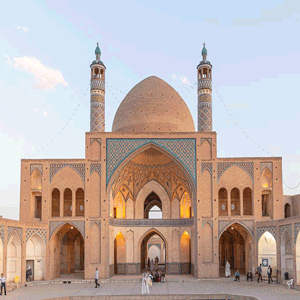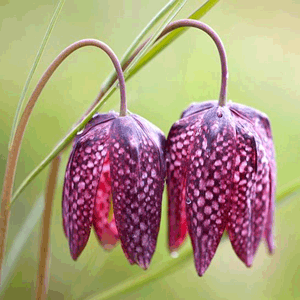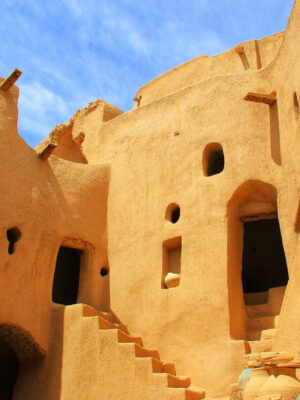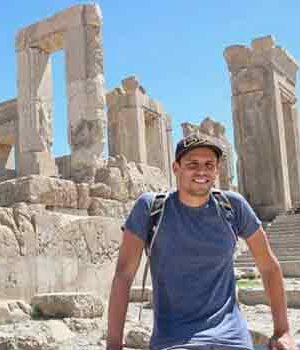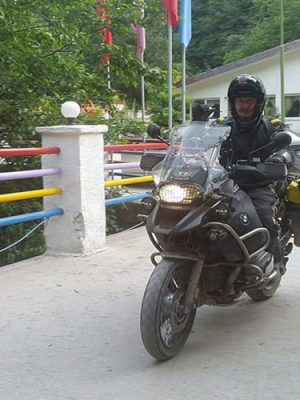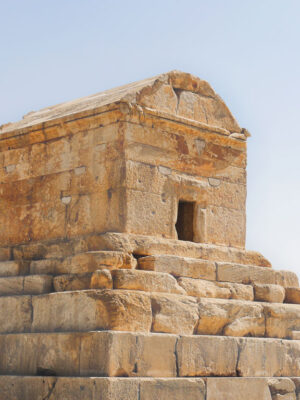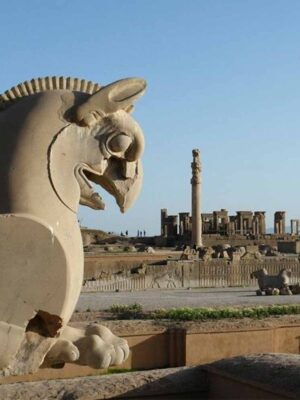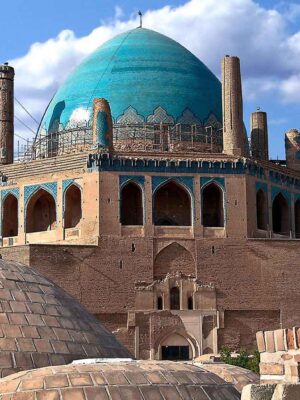Cultural Landscape of Maymand
Maymand village is situated 36 kilometers northeast of Shahr-e Babak in Kerman province. A valley located at an elevation of 2240 meters at the southern end of Iran’s central mountains, it has no perennial rivers and is a semi-arid area. The agro-pastoralist villagers who live here move in seasonal cycles to three (formerly four) specific settlements in this self-contained area.
From the end of winter to early spring, they live in temporary Sar-e -Aghol settlements on the southern pastures where they erect two different kinds of houses. One which is circular and semi-underground to shelter them from wind, made of dry stone wall and topped with a wood and thistle roof. The other is above ground, made of dry stone wall with a cone-shaped roof built from branches.
In the summer and early fall they move to Sar-e-Bagh houses close to the seasonal rivers. The house structures are adjusted to the weather. They are made with dry stone walls and timber and grass thatch roofs when it’s hot. During harsh weather, the structures are built more solidly with tall stone walls and cone-shaped roofs.

In the winter, they move to their permanent troglodyte houses, where people have been living in for thousands of years. These cave dwellings have been linked to the Parthian and Sassanian periods. There are around 350 cave houses made of soft rock called kamar, built in layers of up to five houses, with each having one to seven rooms. The layered sedimentary rock here is soft enough to be carved by manual labor but hard enough to support the roofs of the cave units. The main occupation in the troglodyte houses is carpet-weaving, its carpets among the best in Iran.
The people of Maymand were followers of Mithraism and Zoroastrianism, ancient Iranian religions. Water, fire, and mountains are still revered here. The dry desert environment required that every drop of water be collected from a variety of sources and collected in reservoirs or carried through underground qanats to be used for livestock and to grow vegetables. The village community of Maymand has traditionally been solidly bonded with its natural environment. They live simple lives and this minimalism is reflected in their quiet village, unadorned homes, and unadulterated meals.
The Cultural Landscape of Maymand is a testament to the continuous living heritage of a segment of Iranian history.
Cultural Landscape of Maymand
Maymand village is situated 36 kilometers northeast of Shahr-e Babak in Kerman province. A valley located at an elevation of 2240 meters at the southern end of Iran’s central mountains, it has no perennial rivers and is a semi-arid area. The agro-pastoralist villagers who live here move in seasonal cycles to three (formerly four) specific settlements in this self-contained area.
From the end of winter to early spring, they live in temporary Sar-e -Aghol settlements on the southern pastures where they erect two different kinds of houses. One which is circular and semi-underground to shelter them from wind, made of dry stone wall and topped with a wood and thistle roof. The other is above ground, made of dry stone wall with a cone-shaped roof built from branches.
In the summer and early fall they move to Sar-e-Bagh houses close to the seasonal rivers. The house structures are adjusted to the weather. They are made with dry stone walls and timber and grass thatch roofs when it’s hot. During harsh weather, the structures are built more solidly with tall stone walls and cone-shaped roofs.

In the winter, they move to their permanent troglodyte houses, where people have been living in for thousands of years. These cave dwellings have been linked to the Parthian and Sassanian periods. There are around 350 cave houses made of soft rock called kamar, built in layers of up to five houses, with each having one to seven rooms. The layered sedimentary rock here is soft enough to be carved by manual labor but hard enough to support the roofs of the cave units. The main occupation in the troglodyte houses is carpet-weaving, its carpets among the best in Iran.
The people of Maymand were followers of Mithraism and Zoroastrianism, ancient Iranian religions. Water, fire, and mountains are still revered here. The dry desert environment required that every drop of water be collected from a variety of sources and collected in reservoirs or carried through underground qanats to be used for livestock and to grow vegetables. The village community of Maymand has traditionally been solidly bonded with its natural environment. They live simple lives and this minimalism is reflected in their quiet village, unadorned homes, and unadulterated meals.
The Cultural Landscape of Maymand is a testament to the continuous living heritage of a segment of Iranian history.






